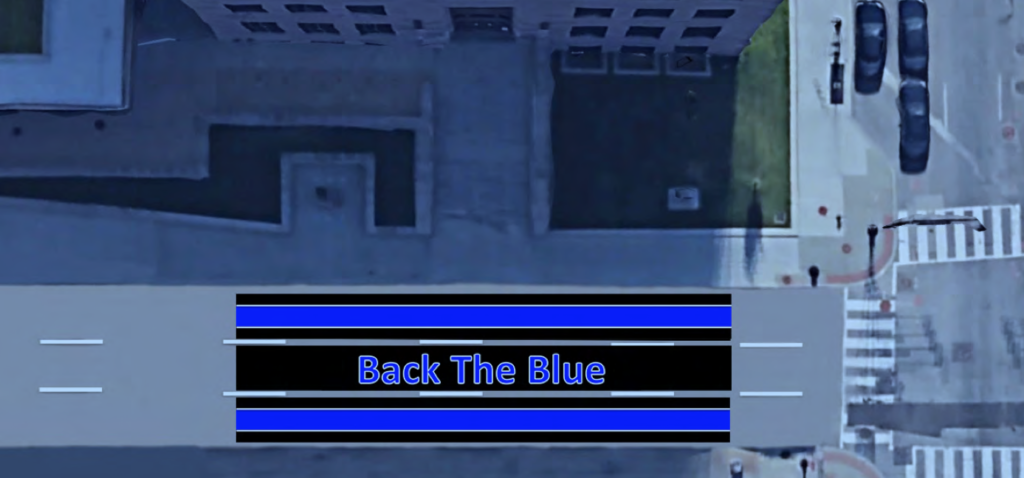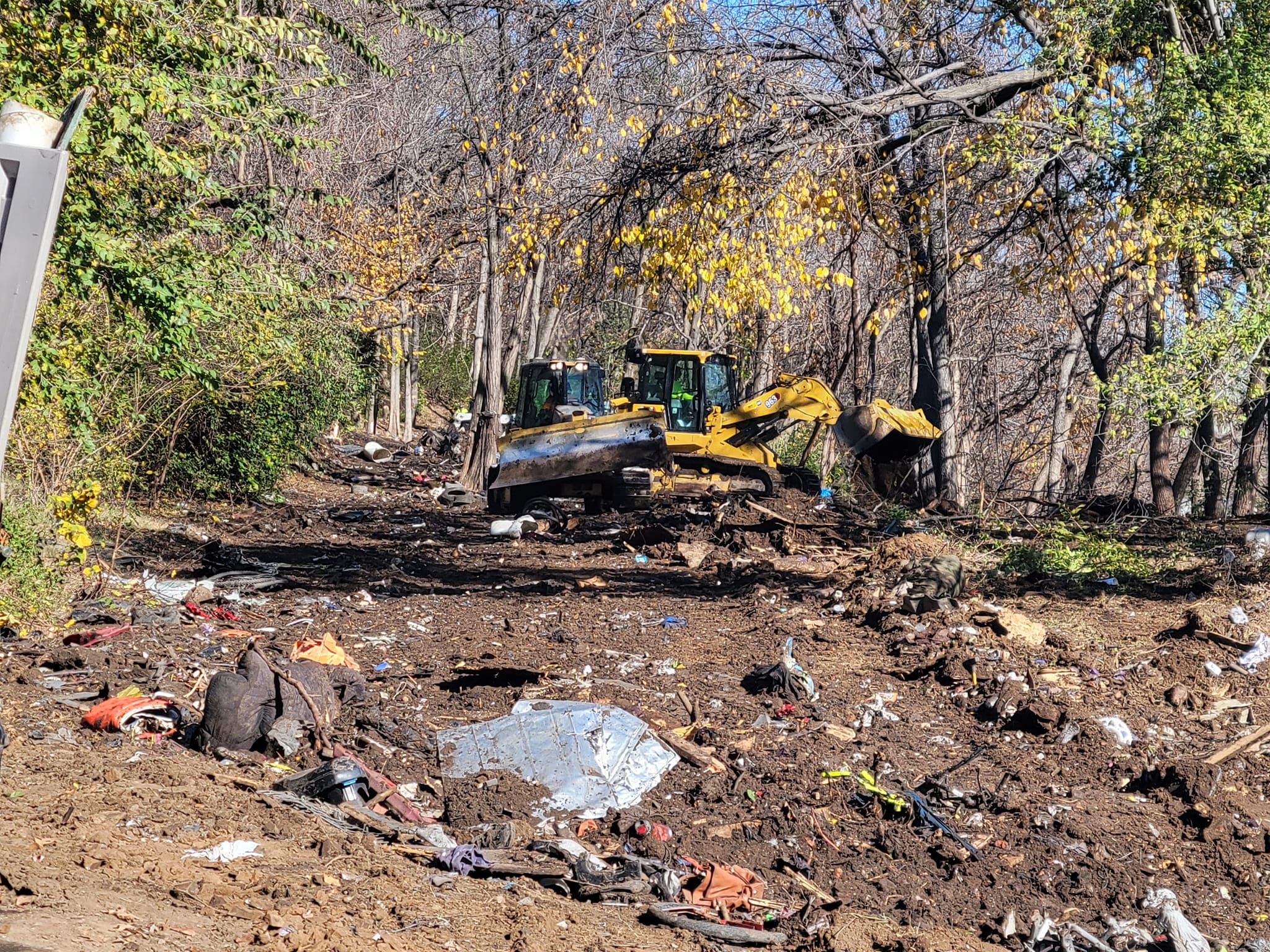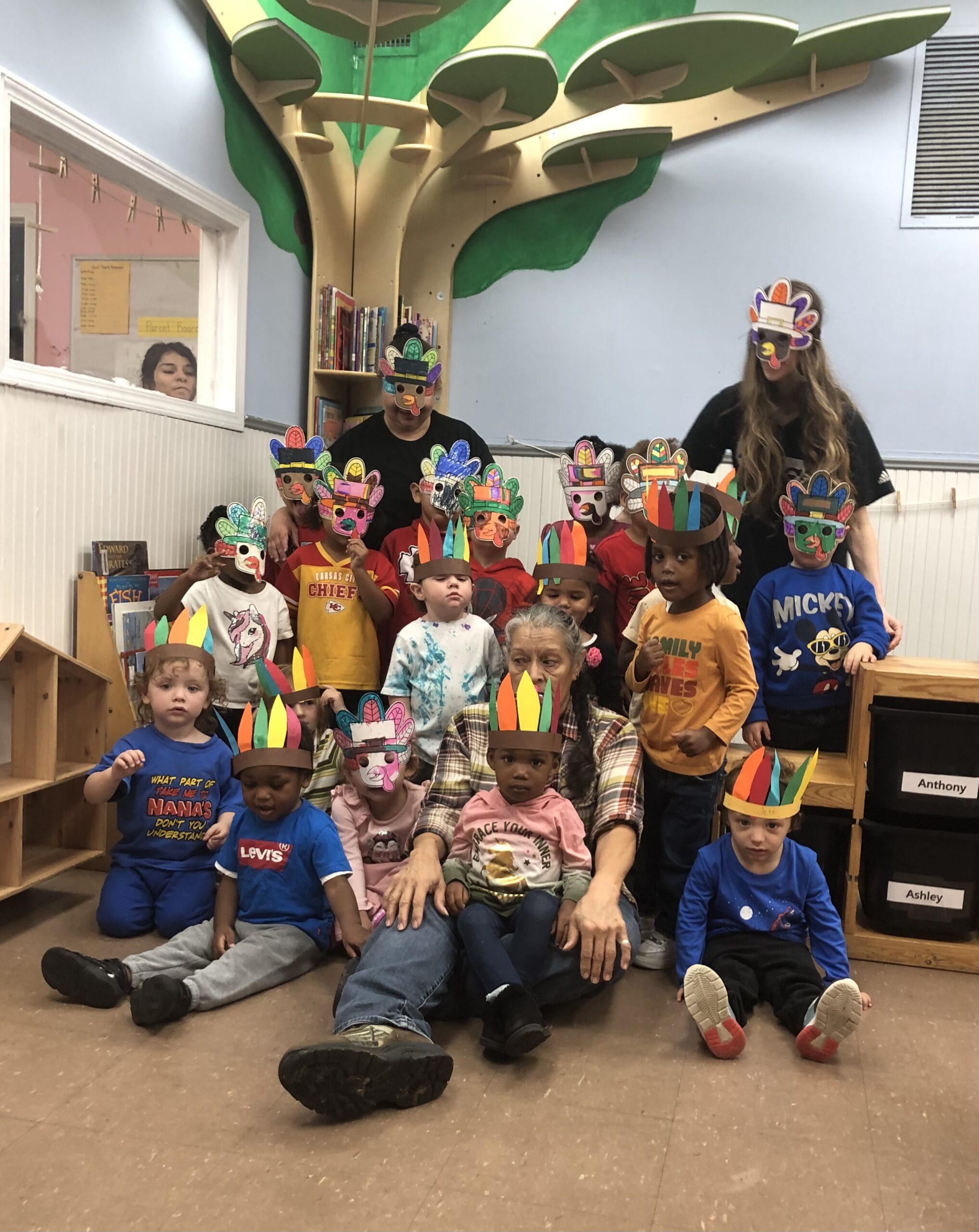
Abby Hoover
Managing Editor
After the Kansas City, Mo., City Council passed a resolution Aug. 6 to approve the painting of “Black Lives Matter” street murals in six locations throughout the city, pro-police residents decided to submit proposals for their own murals.
On Friday, Aug. 6, Michael Corwin, submitted a second request for a street mural permit to Fourth District Legislative Aide Crissy Dastrup.
After researching the city’s ordinances, Corwin was unable to find an ordinance applicable to murals painted on city streets. His first request was made on Aug. 1 to the Public Works Department Permit Division Head, but he had not been contacted by anyone from the city in regards to his permit request.
“I got some information that they were planning on putting murals for another organization in front of the police stations and headquarters of the Kansas City, Missouri Police Department,” Corwin said.
He wants to paint murals on the street in front of 1125 Locust, 1200 E. Linwood Blvd., 7601 Prospect Ave., 2640 Prospect Ave., 9701 Marion Park Dr., 11000 NW Prairie View Rd., and 6801 NE Pleasant Valley Rd.
He submitted his original request to Public Works in these locations to provide something “positive and uplifting” for officers to see.
“That way, they would know the community had their back,” Corwin said. “We want to support the men and women in law enforcement.”
Corwin’s second request included a copy of his initial request and a proposed resolution to enact the request.
Aside from the Central Patrol Division, the locations are rather industrial, Corwin said. He and supporters of these murals have had several discussion groups to plan the murals, even starting a petition that has close to 3,000 signatures.
“Law enforcement has already been beat up so bad that I didn’t want – I’m a retired law enforcement officer – I didn’t want my fellow law enforcement officers to go to work every day seeing something and just taking their morale down a lot more,” Corwin said.
The proposal included concept drawings that show black and blue lines with the words “Back The Blue,” and range from 1,760 to 3,300 square feet. Corwin said the murals will not cover existing traffic lane markings, and added that if the murals are approved he expects to obtain a permit to close the impacted streets for the time frame needed.
In an email shared with the Northeast News, Dastrup said that as a City-initiated project, KC Art on the Block is moving forward without the necessity of permits being issued. She noted that the City does not have a permit process for non-City initiated paintings on public streets by private entities or organizations.
Four councilmembers were involved in the initial planning of the KC Art on the Block initiative, joined by more than 20 supporting private civic organizations, including the Urban League of Greater Kansas City, the NAACP Kansas City and the Troost Market Collective, to promote dialog and greater understanding of race relations within the City.
“The City believes the message that Black Lives Matter is not intended to exclude anyone and instead represents a value statement that all persons deserve to be treated with dignity and respect,” the resolution read.
The final locations approved by the City Council are not in front of KCPD buildings, but rather at Northwest Briarcliff Parkway and North Mulberry Drive, Baltimore Avenue and West 10th Street, East 18th and Vine Streets, Troost Avenue and East 31st Street, Brookside Boulevard and West 63rd Street, and Meyer Boulevard and Troost Avenue.
The funds for the Black Lives Matter street art were all privately raised, and the City is not funding the project nor is Public Works staff implementing the art, Dastrup said. Local volunteers and artists will paint the street murals. The City will support the project, maintain public safety through ensuring the designs, locations and colors selected do not impede with other street markings intended for traffic control.
The City Council passed Resolution 200623 11-1, First District Councilwoman Heather Hall dissenting, on the same day it was introduced without sending it to committee or taking public comment. Within the City’s legislative process, same-day adoption for a resolution requires nine council votes.
Corwin then sent his proposed resolution to every council member and Mayor Quinton Lucas.
“Law Enforcement Officers across the nation are facing the toughest challenges in our lifetime,” Corwin said in his request. “The career requires average men and women to make extraordinary sacrifices and contributions to the communities they serve. The current social climate multiplies the difficulty and stress of the job. Law Enforcement Officers deserve our respect and support.”
As of Thursday, Aug. 13, only one council member had responded. Fourth District Councilman Eric Bunch told Corwin his office is currently contributing to a multi-million dollar project commemorating law enforcement officers through the $600,000 City contribution to the Law Enforcement Memorial Gardens (KCLEMG) located at the Shoal Creek station.
“Public Improvement Advisory Committee funds from almost all City Council Offices over multiple years were dedicated to this worthy cause in 2018 and we are pleased to show our gratitude to law enforcement through these continued efforts,” Bunch said. “This Memorial Garden is nearing completion, with only a few more monument placements withstanding.”
The memorial garden is being constructed behind the Kansas City Regional Police Academy and the Shoal Creek Patrol Station to honor law enforcement lives lost in Clay, Platte, Jackson and Cass Counties, as well as state, federal, railroad and conservation officers. When completed, it will be open to the public as a place of reflection as well as a teaching tool for future generations.
“Officer suicides have skyrocketed this year, and it’s going to go higher throughout the nation” Corwin said. “We have got to take care of the law enforcement officers because they truly are the line between anarchy and peace.”
To those who are taking it upon themselves to paint on streets without the City’s permission or the correct materials, Corwin understands their frustration, but said they should try to go about it in an appropriate way.
“The problem here is there isn’t an appropriate way,” Corwin said. “There’s not a process to ask for murals on city streets.”
Now, Corwin and others are looking for fair treatment from City Council members, who provide the only successful avenue for such projects through sponsored legislation. They are considering legal action against the City.
“It’s obviously not fair,” Corwin said. “If one group can paint on a city street, then everybody ought to be able to paint on a city street. I think it’s very poor judgement on behalf of the City Council to allow one group to and not another group.”

















